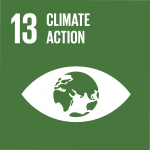COP26 confirms need for increased ambition on public and private finance in the agriculture and land use sectors

The FAO-UNDP SCALA programme launched a Technical Assistance Facility to enhance private sector engagement in climate action.
November 2021 – The world will probably reach or exceed 1.5 degrees C (2.7 degrees F) of warming within the next two decades, according to the 2021 AR6 Report of the Intergovernmental Panel on Climate Change (IPCC). The report set the tone for the 26th UN Climate Change Conference (COP26) in Glasgow, where over 153 countries engaged in negotiations to accelerate climate action and limit global temperature rise to below 1.5 degrees. The conference concluded with the Glasgow Climate Pact that contains a series of decisions to further and strengthen the implementation of the Paris Agreement. These decisions are legally binding, making this a powerful document agreed by all parties.
Key COP26 outcomes in agriculture and land use sectors
Agriculture is both impacted by and a major contributor to climate change in every region. It is expected that the negative impacts of climate change on the productivity of crops, livestock, fisheries and forestry will become increasingly severe in all regions by 2030 due to a wide range of region-specific hazards such as sea-level rise, storm surges, landslides, floods, droughts, wildfires, and sand storms among others. Meanwhile, the majority of greenhouse gases (GHG) (up to 34 percent) in agri-food systems stems from the agriculture and land use sectors and are commonly nitrous oxide emissions from synthetic fertilization of agricultural soils and manured grasslands and methane emissions from livestock production.
The countries that gathered in Glasgow made important progress in addressing climate change and agriculture issues. A range of non-state actors, including the private sector, added their voices on these issues to those of governments, development partners and citizens. Ninety-five high-profile companies from various sectors committed to being ‘nature positive’ and agreed to reverse the decline of our planet’s land and ecosystems by 2030. Climate finance targets were also at the heart of negotiations in Glasgow, given that the 2020 goal of raising USD 100 billion a year to assist developing countries to adapt to climate change has not yet been met.
Climate finance in the agriculture and land use sectors has been particularly inadequate, with a recent FAO analysis showing that the total sum of contributions to agriculture and land use between 2000 and 2018 amounted to USD 122 billion, representing 26 percent of the global climate finance flows to all sectors. Given this gap, it was promising to see renewed pledges made. For example, a record USD 365 million has been committed to the Adaptation Fund – with €100 million from the European Commission – making it the highest single mobilization to the Fund and more than double the previous highest collective mobilization. Additionally, 12 donor governments in a joint-statement pledged USD 413 million in new funding for the Global Environment Facility (GEF) - Least Developed Countries Fund (LDCF). The LDCF is the only dedicated source of climate resilience funds for the 46 Least Developed Countries (LDCs), which have contributed the least to carbon emissions and face some of the highest risks from the impacts of climate change.
COP26 was critical for transitioning from climate negotiations to climate solutions which resulted in significant pledges. The Global Methane Pledge (GMP) was announced and signed by 110 countries. At UNDP’s High-Level Forest and Land Use event, more than 100 countries committed to end and reverse deforestation by 2030, including a pledge of USD 19.2 billion of public and private funds. On the same day, 141 countries (representing 91 percent of the world’s forest coverage) pledged in the Glasgow Leaders’ Declaration on Forests and Land Use to halt and reverse deforestation and land degradation by 2030 and affirmed the important role of forests in balancing greenhouse gas emissions and removals, adapting to the impacts of climate change, and maintaining healthy ecosystem services.
Governments discussed the ‘Koronivia Joint Work on Agriculture’ (KJWA) established at COP23 in 2017. Agriculture negotiators analysed the outcomes of the last three workshops of the KJWA road map and agreed through a joint SBSTA-SBI Koronivia Conclusion to continue working on agriculture targeting the adoption of a COP27 decision to support action on the ground.
Parties agreed that soil and nutrient management practices are at the core of climate-resilient and sustainable food production systems and that improving sustainability in livestock management and animal health can contribute to reducing GHG emissions, while also enhancing carbon sinks in pastures and grazing lands and strengthening food security.
SCALA at the COP26
At COP25, Germany’s International Climate Initiative (IKI) launched a €20 million programme, Scaling up climate ambition on land use and agriculture through NDCs and NAPs (SCALA) to be implemented by FAO and UNDP in 12 partner countries from 2021 to 2025. At COP26, the SCALA programme organized a side event at the Multilateral Development Banks Pavilion on Engaging the private sector to implement agriculture and land use priorities of NDCs and NAPs. The event discussed the role of private sector engagement in accelerating climate action in the land use and agriculture sectors, including barriers and opportunities to scale up climate finance.
SCALA presented findings from the new FAO 2021 (Interim) Global Update Report: Agriculture, Forestry and Fisheries in the NDCs which showed that nearly 59 percent of updated NDCs highlighted consultations with the private sector in the planning process, but a limited number of NDCs (13 percent) refer to engaging the private sector in a concrete manner. Many updated NDCs outline specific private sector entry-points for climate action in the agricultural sectors, with the majority focused on forest systems (31 percent) and agri-food value chains (36 percent). Lastly, the analysis looked at specific barriers for private sector engagement in the NDCs, with inadequate access to finance emphasized across all countries’ NDCs and African countries specifically mentioning the need for de-risking strategies to enhance private sector engagement.
The SCALA programme is designed to address several of these barriers. It aims to foster partnerships between public and private sector actors and identify concrete private sector-oriented interventions in NDC/NAP priorities. It also seeks to build an enablingenvironment to engage businesses in implementing NAP/NDCs at the country level and expand knowledge and best practices on private sector engagement in climate action at the global level. At COP26, SCALA launched a Technical Assistance Facility for private sector engagement in developing countries, drawing upon tools, emerging lessons and partnerships developed under the programme. Countries will receive support through the facility following a demand-led approach based on their national priorities. Priority will initially be given to requests from the 46 Least Developed Countries (LDCs) which are most vulnerable to climate change and have so far accessed limited finance to mitigate and adapt to climate change.
UNDP’s Climate Promise initiative, which supports 120 countries representing 85 percent of all developing countries, launched a new report in Glasgow, NDC Global Outlook Series 2021: The State of Climate Ambition and initiated phase two (2022-2026) of the Climate Promise: from pledge to implementation. The SCALA programme will continue to work with countries to enhance their NDCs and NAPs through transformative change in the agriculture and land use sectors and progress made will feed into the overall objectives of the Climate Promise over the coming years.
***
A full recording of the side event, “Engaging the private sector to implement agriculture and land use priorities of NDCs and NAPs” is available here. The session included a panel discussion with government, private sector and financial institution stakeholders to capture a range of experiences from various actors engaged in climate action in the land use and agriculture sectors.
